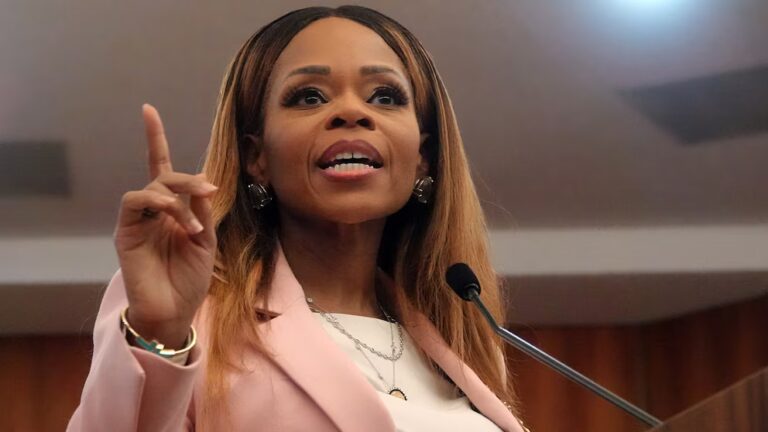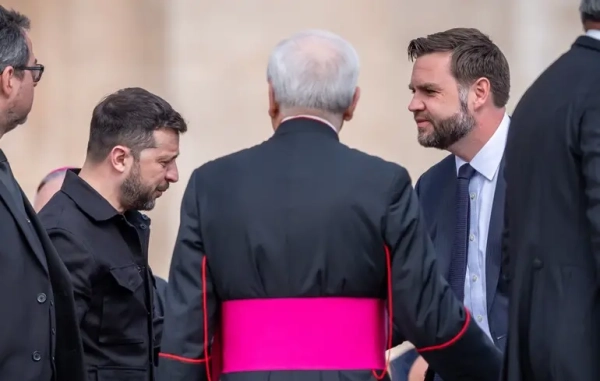
The Trump government’s stance concerning the conflict in Ukraine has resembled a swinging device, fluctuating between supporting Ukraine and favoring Russia within the last year. Currently, it seems to heavily lean towards Moscow.
Earlier in the week, Axios detailed a fresh 28-item Trump administration strategy aimed at concluding the Ukrainian conflict, mirroring the 20-point initiative that facilitated the recent ceasefire in Gaza. US Army Secretary Daniel Driscoll formally conveyed the proposal to Ukrainian President Volodymyr Zelenskyy this past Thursday in Kyiv.
The details, released by the Financial Times this Friday, incorporate several critical surrenders that constitute significant barriers for the Ukrainians. These involve yielding areas not presently under Russian occupation, territories that would grant Russia total dominance over the contested Donbas region. Additionally, the Ukrainian armed forces would have its troop numbers restricted to 600,000, a reduction from the existing 900,000, according to the framework. Furthermore, Ukraine would need to officially declare in its charter that it will not pursue membership in NATO and would be forbidden from allowing foreign soldiers on its territory, essentially undermining Europe’s primary strategy for ensuring peace. The European strategy to finance Ukraine’s post-war reconstruction would be additionally hindered by the condition granting the US half of the resources derived from impounded Russian assets.
The proposition offers vague indications concerning security assurances for Ukraine, keeps the possibility of EU inclusion open, and provides assurances relating to Ukrainian independence. However, Ukraine would probably consider this plan as an effective capitulation.
The administration “must turn it down. The Ukrainian populace will not consent to this,” Olena Halushka, a civic activist affiliated with the International Center for Ukrainian Victory, stated to Vox.
Nevertheless, there are signals suggesting that the US is escalating coercion on Ukraine to comply. Ukrainian representatives disclosed to the Financial Times that US officials desire Zelenskyy to endorse the arrangement by Thanksgiving, with aspirations of finalizing the entire procedure by early December. Allegedly, American authorities have also hinted at curtailing military support and intelligence sharing if Ukraine refuses the settlement.
Zelenskyy expressed his readiness to engage with the Americans on the plan, but this past Friday, he conveyed that Ukraine is undergoing “one of the most challenging junctures in our timeline” and confronting a distressing selection between “the forfeiture of honor, or the prospect of forfeiting a vital ally.”
To summarize, readers within the US may have the sensation of repeatedly encountering this situation since President Donald Trump assumed his position. However, everyone involved suggests that the current circumstance feels distinctive, prompting them to address it with utmost gravity.
Actions are transpiring swiftly, and substantial ambiguity surrounds the agreement, which we can categorize into five primary inquiries.
1. Where did this framework originate?
There is apparent internal friction within US-Russia diplomacy. Markedly, Keith Kellogg, Trump’s designated Ukraine representative regarded as a more pro-Kyiv figure in the government, stepped down shortly after details of the arrangement surfaced. In addition, Russian Foreign Minister Sergei Lavrov hasn’t been publicly seen for several weeks. Secretary of State Marco Rubio’s initial declaration was extremely hesitant and imprecise.
The consensus seems to be that Trump’s general-purpose envoy Steve Witkoff and Kirill Dmitriev, the director of Russia’s national wealth fund, engaged in dialogues with the Americans concerning the conflict, appear to have formulated the accord. Following Axios’s publication of its report, Witkoff — perhaps confusing posts on X with private communications — remarked online that the journalists “must have obtained this insight from K,” likely referring to Kirill. The strategy, as disseminated by the Financial Times, comprises numerous factual and orthographic inaccuracies, implying the endeavors of inexperienced negotiators.
Witkoff has previously exceeded boundaries during interactions with Russian counterparts, prompting some primary doubts among observers regarding Trump’s familiarity with this “Trump plan.”
However, irrespective of the White House’s actual participation in its construction, the administration currently appears to endorse it. “The president is in favor of this plan,” spokesperson Karoline Leavitt affirmed this Thursday. “It’s an effective plan for both Russia and Ukraine, and we are confident that it should gain acceptance from both entities, and we are dedicated to its successful realization.”
What about Vladimir Putin? Dmitriev might be communicating with Axios, but formal assertions from the Russian president’s office and foreign ministry express that they have yet to receive any novel propositions from the Americans. The Kremlin maintains strict confidentiality regarding its strategies.
2. What establishes this juncture as exceptional?
Zelenskyy has addressed Trump’s sporadic pro-Putin inclinations before; however, this specific instance occurs at a decidedly unfortunate period for the Ukrainian head of state, who dismissed a pair of high-ranking officers last week amid ramifications stemming from an escalating corruption controversy. He is likewise confronted with escalating demands for the dismissal of his chief of staff, Andriy Yermak, essentially Ukraine’s second-in-command. The matter arises a few months after Zelenskyy attempted to marginalize the primary anti-corruption watchdogs within his administration, a move he subsequently reversed following widespread public protests.
These events have weakened Zelenskyy’s status inside Ukraine — the president was elected based on a commitment to eradicate corruption and has been governing without elections since his term concluded last year — and disrupted Ukraine’s wartime political alignment during a period in which the administration urgently needs to maintain support from both US and European allies.
3. Is it possible to shift Trump’s perspective once more?
The Ukrainians, along with their European partners, have effectively influenced Trump’s stance in the past. During an August discussion, the president was reportedly affected by an analogy that equated Ukraine’s ceding of its eastern Donetsk region to Trump’s surrender of eastern Florida. Given that the present arrangement would mandate Ukraine’s relinquishment of Donetsk, the comparison seemingly lacked enduring significance.
EU leaders, excluded from the negotiation process and caught off guard by the announcement, are fervently striving to respond, with scheduled discussions intended to synchronize a reaction to the US position.
Presently, the extent to which this represents a collection of inflexible conditions for Ukraine remains somewhat unclear. Some authorities imply that it serves solely as the preliminary phase for deliberations.
4. What transpires if Ukraine declines?
Zelenskyy is unable to consent to this arrangement in its present structure. Should the White House act upon its pledge to halt assistance to Ukraine, the Ukrainian war efforts would face a grave crisis, albeit not inevitably a decisive one. Europe has superseded the US — which has not committed any recent aid to Ukraine since January — as the primary financial supporter of the nation’s military endeavors, and Ukraine is increasingly producing a substantial quantity of its armaments, specifically drones, on its own. Specific US-manufactured systems, like Patriot missiles, lack European counterparts, and Ukraine requires them urgently. Furthermore, a US cessation of intelligence sharing would impede Ukraine’s prowess in both repelling missile assaults and engaging objectives inside Russia.
Halushka asserted that the 28-point proposition constitutes a challenge for Europeans, thereby heightening the urgency of a strategy to employ immobilized Russian sovereign assets to capitalize a long-term economic aid package for Ukraine.
She affirmed that solely Europe possesses the capability to “render the American demands for capitulation inconsequential.”
5. What are Putin’s aspirations?
While Ukraine might consider the 28 points as a de facto surrender, Russia may also perceive certain components as unacceptable. The proposal stipulates “de facto” as opposed to officially sanctioned worldwide acknowledgment of the Ukrainian territory controlled by Russia, and it would necessitate Russia to effectively relinquish its claims over the disputed Kherson and Zaporizhzhia regions, both annexed two years prior. Russia likely desires a Ukrainian military smaller than 600,000 personnel, a figure that would still designate it as the most substantial active military force in Europe after Russia.
Despite the immense casualties and economic burdens borne by Russia, along with its modest advancements on the battlefield, Putin overtly believes that he is triumphing in the conflict, a perception potentially reinforced by recent occurrences on the ground. The Russian leader deems this an existential battle for his civilization and would undoubtedly prefer to dictate his individual terms to the Ukrainians and Western counterparts rather than permit Trump to claim credit for brokering an agreement.
Concisely, the 28-point framework, despite its strong inclination toward Russia, may prove insufficient to fulfill the objectives of either faction.
Source: vox.com






